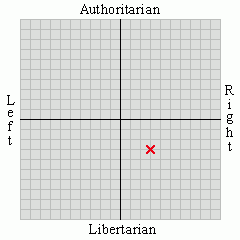After the recent Canadian Federal General Election, I was surprised to find out that the Alternative Vote system of election has been tried and discarded in British Columbia, Canada. In the early 1950's no less. Back in the UK, the Alternative Vote system is being touted as a 'fairer' system of apportioning the popular mandate, but is it really?
Taking the 1953 BC election as a yardstick, where AV was the voting system. This being a real world example of the practice in action, not theory or modelling, but real live, in your face numbers.
In 1953 the victorious Social Credit party started out at the first count with just under 38% of the total vote, which increased to just under 46% of the vote after 'adjustment'. The smaller parties who were knocked out after the first count had their votes allocated to the winning party, not spread amongst the others. See Wikipedia entry here. Er, hold the phone. So how is that 'fairer' than the first past the post system? Explain it to me. By that I mean explain it without any flim-flam, in words an ordinary voter can understand. Especially when we're voting for a specific person to represent us, not merely their party.
The words say 'fairer', but the numbers add up to something else. As far as AV is concerned, I'm not convinced. Needs more thought.
Cross posted at Orphans of Liberty.
Storm Red
11 months ago











6 comments:
My reading of Wikipedia indicates this was the the AV system and that reallocation of votes was according to the next choice on each ballot paper. Is there any useful information on why the elections were changed back to FPTP after a few (I think 3) years?
Also try my comment on Samizdata posted at April 17, 2011 10:29 AM.
Best regards
That's likely because most people voted first for their minor party (good for them), but because there vote didn't count, it go transfered to the social creds cuz they picked them 2nd or 3rd, etc. while the lower parties were eliminated but had their voters voice still count.
That's how this works, you have a choice to rank as you like, that's why its fair and better.
Parties are suppose to have had agreements with one another on how they would vote (if you vote 2 or 3 for me, I'll back up this policy, etc.) I don't see any evidence of that here and IDK why the number of total votes is less than the first vote, leading me to believe the voters weren't educated enough, or most voted for one candidate only as they do under FPTP.
Fact is, AV is better than FPTP, and we should have switched to it yesterday (in other words, we should do this NOW!), all FPTP voting systems should switch to AV, if not a PR voting system (which should only be used in bodies where you don't want a clear majority opinion like upper houses IMHO)
Here is a better modern day example, mind you though, under the law Aussies have to rank ALL the candidates (not vote for one or a few, they have to rank everyone) and voting is mandatory (hence the over 90% turn out.
http://en.wikipedia.org/wiki/Australian_federal_election,_2010
Note the Two Party preference, a score that shows the preference of the two main parties only.
In other words, even though most voters picked their party in the first count, since neither they or the social credits had enough to win the seat (takes over 50% to win a seat or close to it out of two remaining candidates), the lower minor parties were eliminated. If they ranked another party or more (and I'm guessing many didn't, hence why they lost votes in the second count, although IMHO the graph is silly because their votes still counted, it's not like they were "lost") after their first choice (in other words, they decided to mark a 2, 3, and so on by other parties), my guess is many chose the social credits higher than the rest and thats why they go more transfer votes.
Wikipedia explains this better than me, here is a link to AV on Wiki.
http://en.wikipedia.org/wiki/Alternative_Vote
One last point on this. Unlike FPTP which shuts the door on minor parties getting any seats, AV at least leaves that door open, be it ajar.
Because there is always a chance a minor party could win. Say members of party X put party Z in 2nd after them, but members in Party Y but Party Z ahead of them to ensure X loses, resulting in Z winning the seat (as was the case in Melbourne 2010 when the Greens finally won a seat in the federal election for the Commons), or in a close three way race, the other minor parties prefer the third party candidate and thus enough votes swing his/her way to victory. There are many many sinarios.
Fact is, AV does two things.
1. Gives minor parties a chance to win and have an influence on the election that is now more cooperation (with deals being made by parties over policies for votes, so it means something to create a minor party) as well a competition.
2. Give the voters a greater choice in choosing their MP by chosing the one they really want the most to the one they want the least. Also, there is more chance their vote will count towards a candidate they prefer (if not 1st, their 2nd or 3rd choice and so on) as over 50% is needed for a candidature to win.
This is far better than voting for a candidate that is most likely to win even though they don't agree with them, voting for the person you most prefer even though they or their party will not win or have any influence over the election. This leaving minor parties and their voters to the wind, as FPTP currently does.
Matthew,
AV is a choice of alternative voting systems, but my point is, it isn't the right one. Besides, the UK electorate said NO at a ratio of over 2 to 1, regardless of what you or I think.
You can't say fairer than that.
"AV is a choice of alternative voting systems, but my point is, it isn't the right one."
The what would you have? because FPTP is broken.
"Besides, the UK electorate said NO at a ratio of over 2 to 1, regardless of what you or I think."
Yeah, cuz they were misled by the no side who resulted to telling lies and BS ("Australia has AV, but wants to get rid of it" um no we don't), and the yes side didn't make the case as it could have (Labour could have stepped up and been for AV). Not to mention only 41% voted in it.
If anything, that shows that referendums are ineffective and corrupt.
Post a Comment